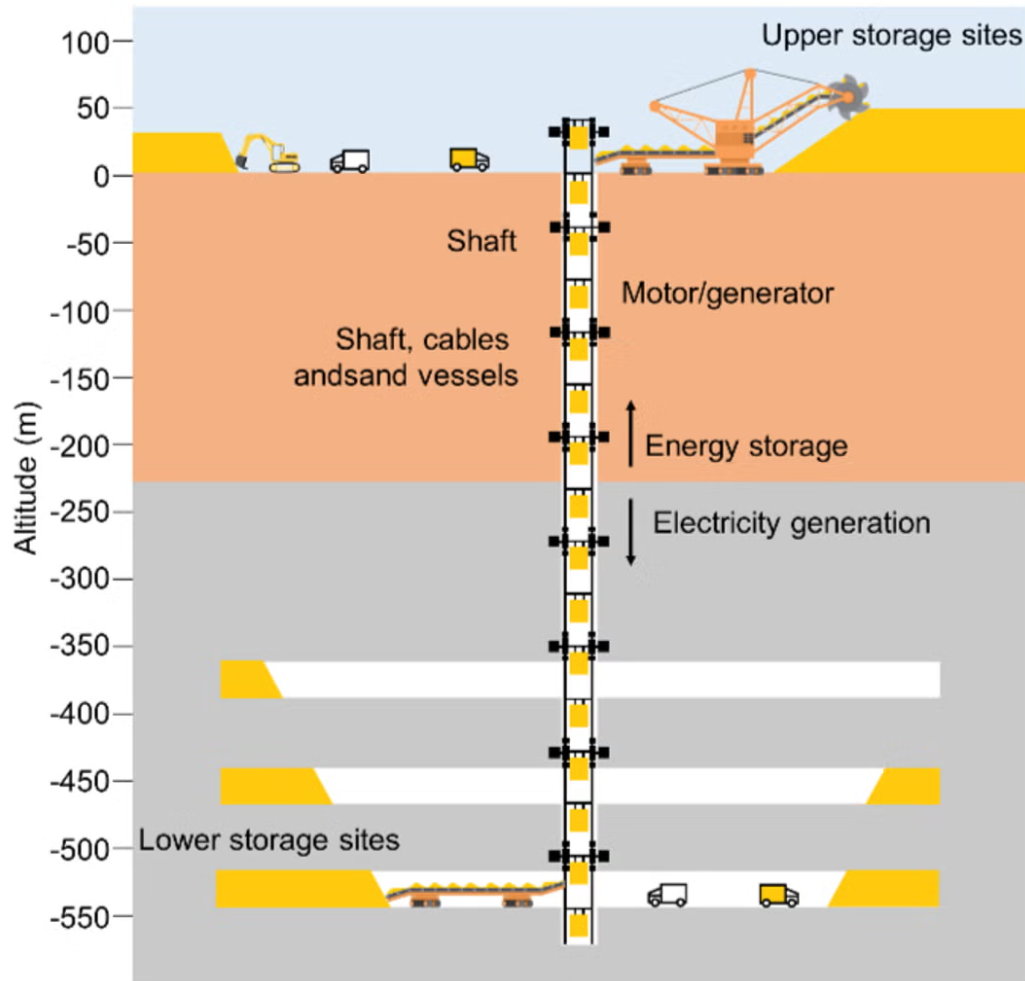Gravity batteries are one of the most important technologies being developed for energy storage. As renewables continue to gain weight in overall energy production, we need to look for patterns to store it. And a good way will be the use of old mines for fossil fuels.
The world is in the process of major decarbonisation if we want to leave a sustainable planet for future generations. Like any transformation process, it costs time and resources, as well as overcoming the resistance of multimillion-dollar interests that do not want to change anything. Our economic and living system certainly cannot be eliminated with the stroke of a pen, but the process of overcoming what scientists believe to be the greatest global human crisis (climate change) requires awareness, deep change and investment if we are to protect the very existence of our species and the planet that supports us welcomes
Gravity battery, energy storage of the future?
The idea is use the abandoned mining infrastructure install new generation energy production/accumulation systems connected to renewable sources of production. Basically, it is the storage of energy in an object or matter (whether solid or liquid) due to a change in height due to gravity through a technology also known as potential energy.
That’s what they’re about to install at Pyhäsalmi, the deepest zinc and copper mine in Europe, located 450 kilometers north of Helsinki and with the potential to store up to 2 MW of energy in its 1,400-meter-deep boreholes. The abandoned mine will be equipped with a gravity battery to store excess energy from renewable sources such as the sun and wind.
Its basic functioning has been known since the 17th century, when Christiaan Huygens invented the pendulum clock. After a mass is lifted, some gravitational potential energy is stored based on the mass of the object and the height to which it was lifted. The higher the mass is lifted, the more gravitational potential energy is stored; and the heavier the mass, the greater the change in energy. Therefore, the deepest mines, such as the one in question, are the most profitable.


Here, excess energy from renewable sources such as the sun and wind is used to lift heavy loads. During periods of low production, the mass is released and used to drive the turbine as it falls. This system was developed by the Scottish company Gravitricity (one of the world leaders in these technologies), which plans to use a Finnish mine as a full-scale prototype to demonstrate the technology.
“This large-scale project will demonstrate how our technology can provide reliable and long-term energy storage capture and store energy during periods of low consumption and release it quickly when needed… “This large-scale project will provide a pathway to further commercial projects and enable the integration of our solution into mine decommissioning activities, offering future potential for mines that are nearing the end of their original life.”they explain.
All the energy consumed by the planet
A study by the International Institute for Applied Systems Analysis (IIASA) estimates that gravity batteries in abandoned underground mines can store up to 70 TWh energy, which would be enough to meet global electricity demand. In addition, reclaimed mines could also provide economic benefits to communities that previously depended on coal, zinc or copper mining for their livelihoods.
IIASA analysts pointed out that large mines already have the basic infrastructure to install gravity batteries, in addition to connecting to the electricity grid. “This significantly reduces costs and facilities for the implementation of underground gravity energy storage (UGES)”, the study says. A good choice because the world is moving to renewable energies, which as you know are intermittent production and consumption, so they capture and store energy during periods of low demand and release it quickly when needed.
To know more | gravity battery
